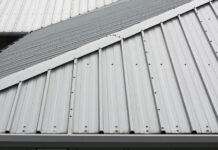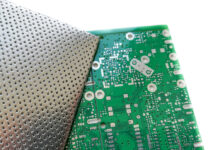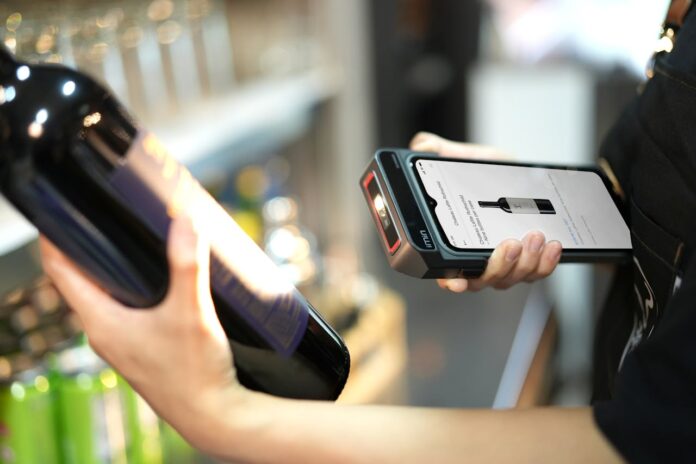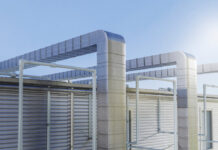You may have heard of the term RFID; it’s short for radio frequency identification. This technology has evolved the way businesses track, manage, and authenticate assets. From logistics and retail to healthcare and security, an RFID environment streamlines operations and provide real-time visibility into inventory and processes.
When people think about the term RFID, the first thing that comes to mind is RFID Tags and the various types of RFID readers available, but this isn’t just the case. An RFID system is made up of several interconnected components that work together to collect, transmit, and interpret data. From readers and antennas to software and networks, every element plays a crucial role in ensuring smooth, accurate, and efficient operation.
Below, we have put together an article on everything that makes up an RFID environment. Keep on reading to learn more and discover everything to do with RFID (radio frequency identification).
RFID Tags
A good place to start is the RFID Tags, as you may have heard of them. These are small devices that store data and communicate it via radio waves. RFID tags can be: Passive, which have no internal power source. Active, which means they contain their own battery or Semi-passive, which is a combination of active and passive (they are battery-assisted). Each tag contains a microchip for data storage and an antenna for transmitting signals. The data stored can range from simple identification numbers to detailed product or asset information.
RFID Readers for RFID Environments
The reader, also called an interrogator, is responsible for sending and receiving radio signals to and from the tags. Readers can be fixed, such as being mounted to a specific location, such as a conveyor belt. Or it can be mobile, such as handheld devices used by personnel to scan and collect data in real-time. The reader captures the information transmitted by RFID tags and converts it into digital data that can be processed by software systems. Businesses use RFID environment readers a lot, but you may not see them unless you are paying attention.
Antennas
An often overlooked yet critical part of any RFID setup, antennas enable communication between the tags and readers. They transmit and receive the radio signals that carry data, acting as the bridge between physical tags and digital systems. The type, placement, and orientation of antennas all have a major impact on system performance.
A well-designed antenna layout ensures strong signal coverage, minimal interference, and reliable tag reads, even in complex environments
Middleware and Software Systems
The middleware serves as the bridge between RFID hardware and enterprise systems, filtering, interpreting, and routing the data captured by readers into meaningful information. Modern RFID software platforms often integrate with inventory management systems, ERP (Enterprise Resource Planning) software, WMS (Warehouse Management Systems), and security or access control systems. This software layer translates raw tag data into actionable insights – such as real-time inventory tracking, automatic restocking alerts, and movement analytics – empowering businesses to make smarter, data-driven decisions.
Networking and Data Infrastructure
RFID systems rely on strong network connectivity to transmit data from readers to central databases, ensuring seamless communication across the entire environment. This connectivity may involve local networks (LAN/WAN) for on-site data transfer or cloud-based systems for remote monitoring and integration with other digital tools. A robust network infrastructure is essential to prevent data loss, enable scalability, and maintain consistent system uptime, allowing RFID operations to run efficiently and reliably.
Environmental Considerations
An RFID environment is influenced by its physical and electromagnetic surroundings. Materials like metal and water can interfere with radio signals, while temperature and humidity may affect tag performance. To counter these challenges, engineers often conduct RF site surveys to optimise tag placement, reader positioning, and frequency selection.
In addition, using specialised RFID tags designed for challenging conditions – such as on-metal tags or high-temperature variants – can help maintain reliable performance in harsh settings. Proper environmental planning not only enhances read rates but also extends the lifespan of the system and reduces maintenance costs over time.
Security and Data Integrity
As RFID systems handle sensitive operational data, security is a key component. Encryption, password protection, and access control mechanisms are used to prevent cloning or unauthorised access to tag data. Some advanced RFID systems even use blockchain integration to ensure transparent and tamper-proof tracking.
A fully functional RFID environment is more than just tags and readers – it’s an interconnected ecosystem of hardware, software, and networks working together to collect, analyse, and act upon data. Have you worked with RFID (radio frequency identification) systems before? Which part of the setup do you think has the biggest impact on performance – tags, antennas, or software? How important is security within your business, and do you think RFID is secure enough? Is there anything missing in our guide that you think is important? Let us know in the comment box below. We look forward to hearing from you.
Find a Home-Based Business to Start-Up >>> Hundreds of Business Listings.
















































